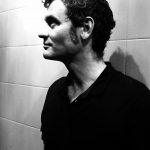Indigenous Australians Face Racism at Every Level of the Justice System

A 66-year-old Indigenous man was shot by police in Broome on Monday night, after he allegedly threatened officers and a taxi driver with a knife.
Police were called to a disturbance at a property on Gubinge Road near the popular tourist area of Cable Beach. The man, who’s from the remote Aboriginal community of Balgo, is alleged to have confronted police with a knife, which led an officer to draw his revolver and shoot.
The man was taken to Broome Hospital and his injuries are not believed to be life threatening.
Indigenous man shot by police in Cowra
The incident happened just days after Dennis John Doolan, an Aboriginal man from the NSW town of Cowra, was shot from behind by police.
Police say they’d been pursuing the 32-year-old for around 40 minutes, when they attempted to speak to him on Jindalee Circuit. Doolan, who police said was armed at times during the confrontation, was moving towards an officer, when he was shot by another in the lower back.
John Simpson told the ABC that his cousin, Doolan, had been unfairly targeted by police. “An unarmed man, arms in the air, willing to surrender, and then shot,” Simpson said.
Doolan was taken to Orange Base Hospital, where he was treated. It remains unclear as to why police shot him.
But are these two incidents – that happened within the space of a week – part of a pattern of systemic racism within the police force?
Racism within the police force
According to the chairman of the the Indigenous Social Justice Association, Ken Canning, it certainly does. “There’s nothing the Australian police force has shown me to date that says that they haven’t got a culture of racism within every state police force,” Canning told Sydney Criminal Lawyers®.
The Murri activist added he didn’t think that meant every policeman was a racist. But he believes there’s a culture within the force of failing to report officers who mistreat Aboriginal people.
“Those who are not guilty of direct racism are guilty of turning a blind eye and that causes deaths,” Canning said.
Bias in the criminal justice system
Institutionalised racism is not just found within the police force – it seems the whole criminal justice system plays its part. A recent NSW Bureau of Crime Statistics and Research (BOCSAR) report found that over the last fifteen years, the Indigenous prison population in NSW has more than doubled.
The report revealed that over this same period, rates of Indigenous involvement in violent or property related-crimes has dropped. The rise in arrests is believed to be growing due to enforcement of justice procedure offences and acts intended to cause injury.
The highest rise in the rate of Indigenous convictions for justice procedure offences was for breaches of a community-based orders. The BOCSAR report suggests the rise is due to a change in policy, rather than a change in patterns of offending.
It concludes that the rise in Indigenous incarceration in NSW is due to “a combination of higher rates of arrest resulting in conviction, a greater likelihood of imprisonment given conviction and a higher rate of bail refusal.”
And NSW is not alone. On an age standardised basis over the period from 2001 to 2015, the Indigenous prison population in NSW rose by 40 percent. Over the same period, the Indigenous population in Victoria rose by 141 percent, and by 171 percent in the Northern Territory.
Racism from the top down
As Canning sees it, arrest and imprisonment rates of Indigenous people around the country are rising because of the example that’s being set by Australian politicians. He brought up the Northern Territory Intervention as an example.
In 2007, the Howard government sent law enforcement officers to close down remote Aboriginal communities in the Northern Territory on the pretext that paedophile rings were in operation. The claims were subsequently proven to be false.
The politicians “are setting an example for the rest of the community and the police are part of that community,” Canning explained. He said that if politicians are mistreating sections of society, then police “think it’s an open go.”
The prison system
Racism against Indigenous Australians who are placed in custody is well-documented. Take the tragic case of Ms Dhu, who died in police custody at South Hedland police station in Western Australia in August 2014.
The 22-year-old Yamatji woman was imprisoned for failing to pay fines totalling $3,622. During her 48 hours of incarceration, she was taken to hospital three times and died on her final trip.
Officers responded to Ms Dhu’s complaints of pain by accusing her of faking her injuries to get out of her prison cell. But a post-mortem found the cause of death to be septicaemia and pneumonia resulting from an infection from a broken rib, believed to have been caused by an assault at the hands of her domestic partner.
Then there’s the case of David Dungay, a 26-year-old Dunghutti man from Kempsey, who died in custody at Sydney’s Long Bay Correctional Complex in December last year.
After Dungay refused an order from prison staff to stop eating biscuits, the diabetic man was hauled to another cell so he could be monitored by a CCTV camera.
After police threw him face down on a bed and held him there, Dungay said he couldn’t breathe. The officers responded that if he could talk, then he was breathing. Prison staff continued to hold him face down on a mattress, injected him with a strong sedative. Mr Dungay is reported to have turned purple. He stopped breathing and died.
Psychological abuse
Canning points out that it’s not just physical mistreatment of Aboriginal inmates that has an impact, it’s the constant psychological abuse they face on the inside.
Canning says that people coming out of prison tell him that “on a daily basis, they’re being treated shockingly.” He said when an inmate is released, “they’ve got this in built anger and it’s not healthy.”
He cited the 1987 ABC documentary Out of Mind, Out of Sight that examined life within the Australian prison system. He’s reminded of a “haunting line” said during the film by an incarcerated Koori man – a friend of Canning’s – that is as relevant today as it was back them.
“They call you filthy names year in, year out. They spit on you. They’ll belt you around. They’ll do this. They’ll do that,” Canning quoted. “They create human rights abuses on you and then they let you out on the streets.”
Image Credit: cdn.newsapi.com.au







